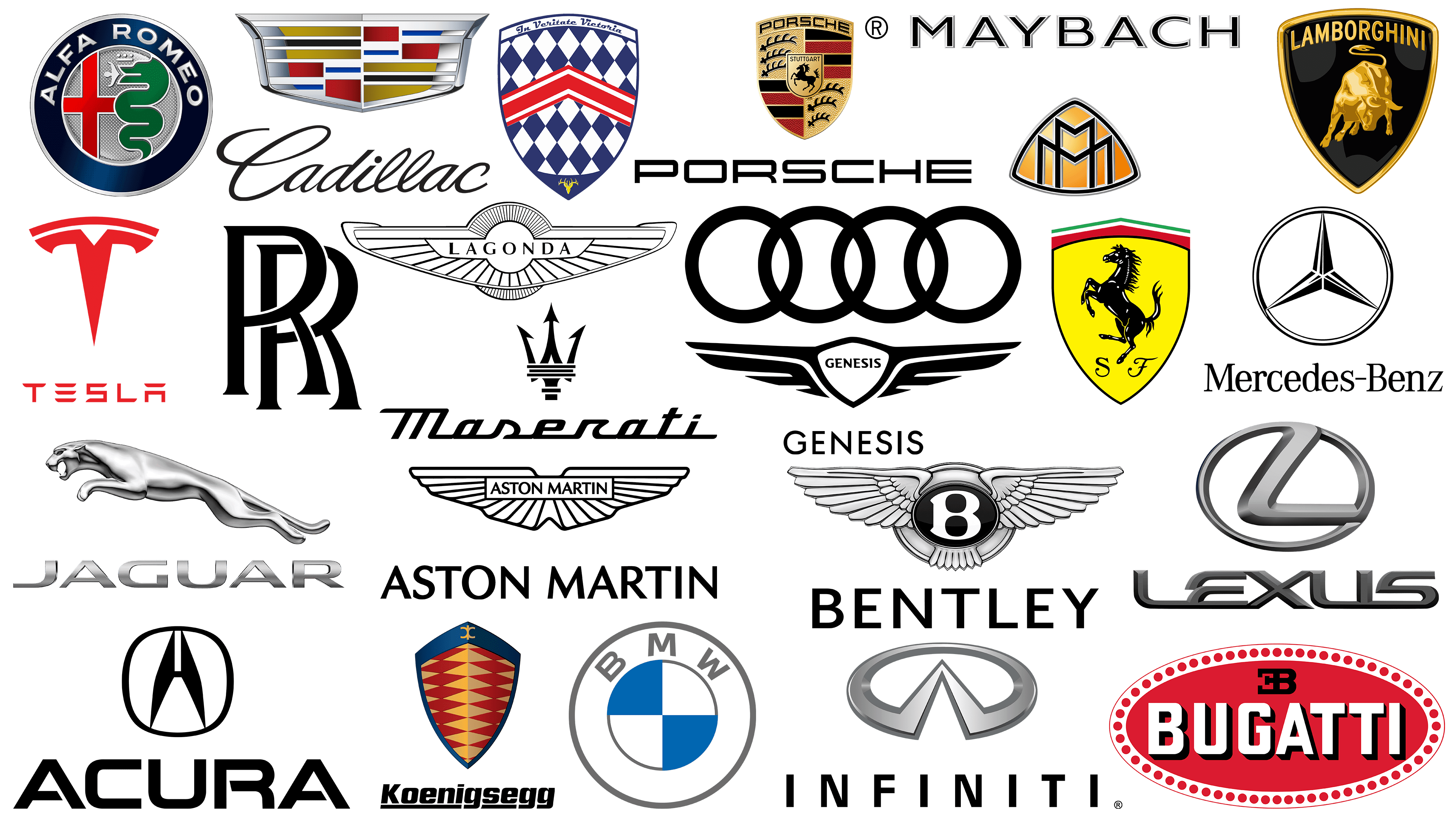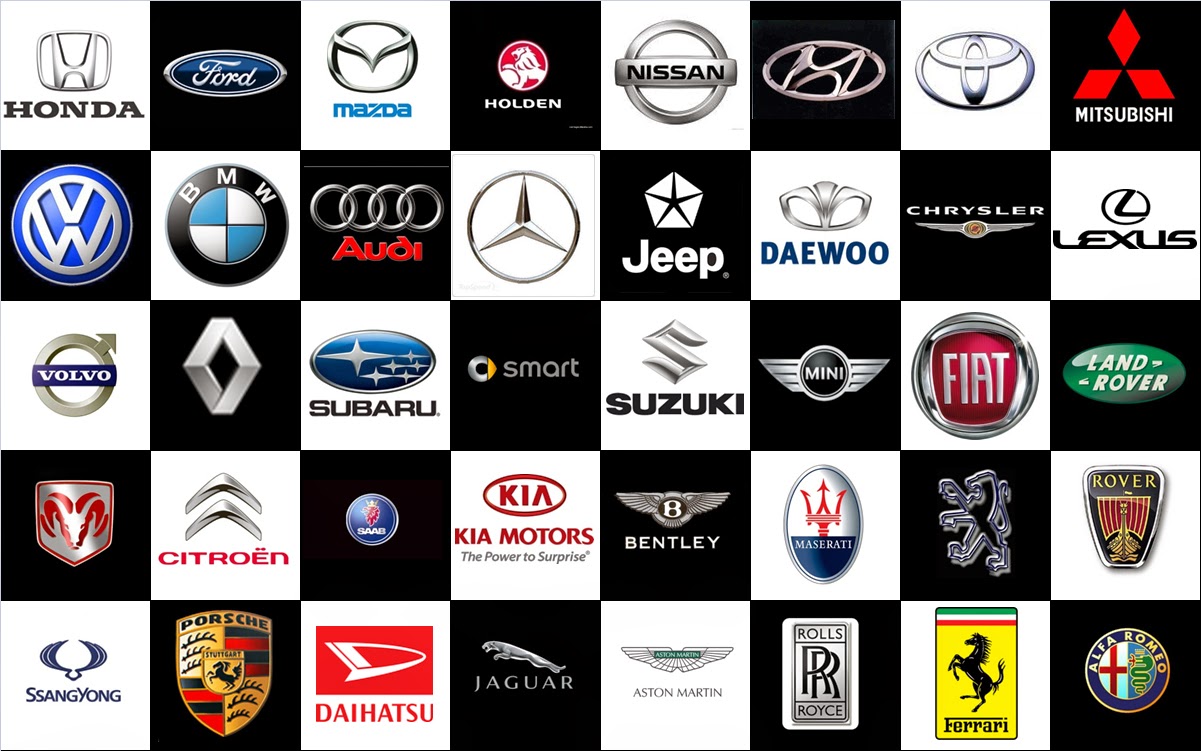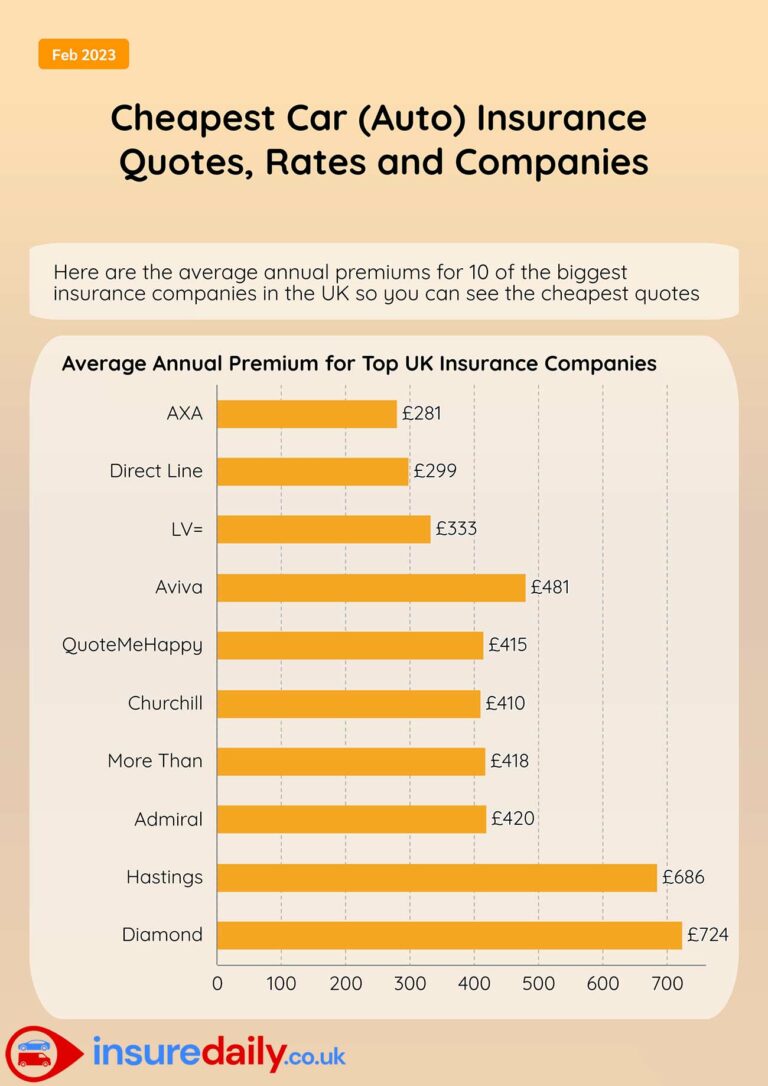Luxury Car Brand Symbols: The Emblems of Excellence and Aspiration
Luxury Car Brand Symbols: The Emblems of Excellence and Aspiration cars.truckstrend.com
In the elite world of luxury automobiles, a car is far more than just a mode of transport; it’s a statement, a legacy, and a work of art. Central to this identity are the luxury car brand symbols – the meticulously crafted logos, emblems, and mascots that adorn these magnificent machines. These symbols are not mere decorative elements; they are condensed narratives of heritage, innovation, and unparalleled craftsmanship. They are instantly recognizable hallmarks that evoke a powerful emotional response, signifying status, aspiration, and a commitment to automotive perfection. Understanding these symbols is key to appreciating the depth of the luxury automotive experience, revealing stories of origin, design philosophy, and the very soul of the brand they represent.
The Anatomy of a Luxury Car Symbol
Luxury Car Brand Symbols: The Emblems of Excellence and Aspiration
Luxury car symbols manifest in various forms, each serving a distinct purpose in communicating the brand’s essence. Their design is a careful balance of aesthetics, history, and strategic branding.
- Logos: At their core, logos are the primary visual identifiers. In luxury cars, these are often refined wordmarks or abstract marks. Brands like Lexus use a stylized "L" within an oval, conveying precision and elegance. Porsche’s crest is a complex shield, rich with historical references to Stuttgart and Württemberg. Modern trends often see these logos flattened for digital consistency, but their physical manifestation on a car often retains a three-dimensional, tactile quality.
- Emblems/Badges: These are the physical manifestations of the logo, typically found on the grille, wheel caps, steering wheel, and trunk. They are often rendered in premium materials, sometimes even precious metals, showcasing attention to detail. The iconic Audi four rings, signifying the merger of four automobile companies, are a prime example of an emblem that is both simple and profoundly symbolic.
- Mascots/Hood Ornaments: Historically significant, these three-dimensional figures mounted on the hood are perhaps the most evocative of luxury car symbols. The most famous is Rolls-Royce’s "Spirit of Ecstasy," a graceful figure embodying speed, silence, and beauty. Mercedes-Benz’s standing three-pointed star, once a common hood ornament, still graces some models, signifying the brand’s aspiration to dominate land, sea, and air. These mascots add an unparalleled sense of grandeur and tradition.
- Signature Design Elements: Beyond explicit logos, many luxury brands incorporate distinctive design elements that act as subtle symbols. BMW’s "kidney grille" and Hofmeister kink, Jaguar’s leaping cat stance in its vehicle profiles, or Bentley’s matrix grille pattern are instantly recognizable, reinforcing brand identity without needing a literal badge. These elements are integral to the car’s overall aesthetic and brand recognition.
The Psychology Behind the Symbol

Luxury car symbols wield significant psychological power, influencing perception, desire, and purchasing decisions. They tap into fundamental human aspirations:
- Status and Prestige: Owning a car adorned with a globally recognized luxury symbol immediately confers status. It’s a visible declaration of success and discernment, a badge of honor that resonates with social hierarchies.
- Aspiration and Desire: For many, these symbols represent a goal, a dream to attain. They embody a lifestyle of comfort, power, and exclusivity, driving a powerful desire to experience that world.
- Trust and Reliability: Decades of meticulous engineering and quality assurance are condensed into these symbols. They become shorthand for reliability, performance, and a superior ownership experience, building profound trust in the brand.
- Exclusivity and Heritage: Many luxury symbols are deeply rooted in rich histories, often spanning over a century. This heritage implies a legacy of innovation, craftsmanship, and a commitment to excellence that is passed down through generations, fostering a sense of belonging to an exclusive club.
- Emotional Connection: Beyond logic, these symbols evoke strong emotions – pride, excitement, admiration. They tell a story, connecting the owner to the brand’s narrative of triumph, speed, elegance, or innovation. This emotional bond is crucial for fostering brand loyalty.

Iconic Luxury Car Symbols and Their Stories
The stories behind luxury car symbols are as compelling as the vehicles themselves, often reflecting the brand’s origins, values, or ambitions.

- Mercedes-Benz: The Three-Pointed Star: Designed by Gottlieb Daimler, the star symbolizes his vision for motorization "on land, on water, and in the air." Its simplicity and bold geometry convey universal ambition and engineering prowess.
- BMW: The Roundel: Often mistakenly thought to represent a spinning propeller (due to BMW’s history in aviation), the blue and white quadrants actually depict the Bavarian flag colors. The black ring provides a stark contrast, encapsulating precision and performance.
- Audi: The Four Rings: These interlocking rings represent the 1932 merger of four previously independent motor vehicle manufacturers: Audi, DKW, Horch, and Wanderer, forming the Auto Union. They symbolize unity, strength, and a shared future.
- Rolls-Royce: The Spirit of Ecstasy: This graceful figurine, designed by Charles Robinson Sykes, is inspired by a real woman, Eleanor Thornton, and embodies speed, silence, and beauty. It elevates the car to an art form, symbolizing ultimate luxury and bespoke craftsmanship.
- Ferrari: The Prancing Horse (Cavallino Rampante): A deeply personal emblem, it was originally painted on the fuselage of Italian WWI flying ace Francesco Baracca’s fighter plane. Baracca’s mother encouraged Enzo Ferrari to use the horse as a good luck charm, adding the yellow background of Modena, Enzo’s birthplace. It epitomizes passion, speed, and racing heritage.
- Lamborghini: The Raging Bull: Ferruccio Lamborghini, a Taurus, chose the bull to symbolize power, aggression, and uncompromising strength. Many Lamborghini models are named after famous fighting bulls, reinforcing this fierce identity.
- Porsche: The Stuttgart Crest: The elaborate crest combines elements from the Free People’s State of Württemberg-Hohenzollern (black and red stripes, stag antlers) and the city of Stuttgart (black horse on a yellow background, symbolizing a stud farm). It represents deep roots, German engineering precision, and sporting excellence.
- Aston Martin: The Wings: First appearing in 1927, the wings symbolize speed, freedom, and aspiration. They evoke a sense of flight and aerodynamic grace, perfectly complementing the brand’s elegant sports cars.
- Bentley: The Flying B: A stylized "B" with outstretched wings, this emblem mirrors Aston Martin’s concept of speed and elegance but adds a distinct touch of British luxury and formidable power.
- Maserati: The Trident: Inspired by the Fountain of Neptune in Bologna’s Piazza Maggiore, where the Maserati brothers founded their company. Neptune’s trident symbolizes strength, power over the seas, and exclusivity, reflecting the brand’s potent performance and distinct Italian flair.
The Evolution and Modernization of Symbols
Luxury car symbols are not static; they evolve to remain relevant in changing aesthetic and technological landscapes. The challenge lies in modernizing without losing historical essence. Many brands have recently embraced "flat design," simplifying their logos for better digital readability and a more contemporary feel. Mercedes-Benz, BMW, and Audi have all introduced simplified versions of their iconic logos for digital applications, while often retaining the three-dimensional versions for physical car badging. This evolution reflects a careful balance: honoring a rich past while embracing a technologically advanced future. Redesigns are often met with intense scrutiny from purists, underscoring the deep emotional attachment consumers have to these symbols.
The Role of Symbols in Marketing and Brand Identity
Symbols are critical pillars of a luxury car brand’s marketing and identity strategy:
- Instant Recognition: A strong symbol allows for immediate brand identification, even without a brand name visible. This is invaluable in a competitive global market.
- Differentiation: In a segment where vehicles often share similar performance metrics and luxury features, the symbol provides a unique identifier, setting one brand apart from another.
- Reinforcing Brand Values: Every curve, color, and element of a symbol is designed to subtly communicate core brand values – be it elegance, power, innovation, or heritage.
- Building Emotional Connections: Symbols transcend language barriers, speaking directly to aspirations and desires, forging powerful emotional bonds with potential buyers.
- Protecting Brand Integrity: Luxury symbols are heavily protected by trademarks. Their distinctiveness helps combat counterfeiting and maintain the brand’s exclusivity and value.
Important Considerations for Symbol Design and Usage
For both brands and consumers, several aspects of luxury car symbols are important:
- Simplicity and Memorability: The most iconic symbols are often simple enough to be easily recalled and recognized, yet profound enough to carry significant meaning.
- Scalability Across Platforms: A symbol must look good and be legible whether it’s on a tiny website favicon, a large billboard, or embossed on leather upholstery.
- Cultural Sensitivity: When designing for a global market, symbols must be vetted to ensure they don’t carry unintended negative connotations in different cultures.
- Legal Protection: Rigorous legal protection through trademarks and copyrights is essential to prevent unauthorized use and maintain brand exclusivity.
- Consistency in Application: Brands must ensure their symbol is consistently applied across all touchpoints – from advertising to physical products – to build a cohesive and strong brand image.
Practical Advice and Actionable Insights
For enthusiasts and potential owners, understanding these symbols enhances the appreciation of luxury vehicles. Take the time to learn the story behind the badge on your dream car; it connects you more deeply to its legacy. For those in marketing or design, studying these symbols offers a masterclass in effective branding: how to distil complex values into a single, compelling visual identity. Recognize that the symbol is often the first, and most lasting, impression a brand makes.
Symbolic Value and Market Impact of Luxury Car Brands
While luxury car symbols themselves do not have a direct "price," their contribution to brand value, market perception, and desirability is immense. The table below illustrates the qualitative impact and perceived value associated with some prominent luxury car brand symbols. This "value" reflects the emotional connection, status, and heritage that the symbol imbues into the brand and its products, directly influencing market position and sales.
| Brand | Symbol | Key Design Elements/Meaning | Associated Brand Value/Perception | Contribution to Brand Equity & Market Position |
|---|---|---|---|---|
| Mercedes-Benz | Three-Pointed Star | Domination of land, sea, air; engineering excellence | Prestige, Innovation, Reliability | Immense, Global Recognition |
| BMW | Roundel | Bavarian flag colors; precision engineering | Performance, Driving Dynamics, Luxury | High, Strong Enthusiast Following |
| Audi | Four Rings | Unity of four merged companies; progressive design | Sophistication, Technology, Progress | Significant, Premium German Engineering |
| Rolls-Royce | Spirit of Ecstasy | Grace, elegance, silence, bespoke luxury | Ultimate Luxury, Exclusivity, Heritage | Unparalleled, Elite Status |
| Ferrari | Prancing Horse | WWI ace’s emblem; passion, speed, racing | Passion, Performance, Exclusivity | Crucial, Iconic Sports Car Brand |
| Lamborghini | Raging Bull | Founder’s zodiac sign; power, aggression | Uncompromising Performance, Boldness | Very High, Distinctive Supercar Identity |
| Porsche | Stuttgart Crest | City/region coat of arms; racing, heritage, precision | Performance, Engineering Purity, Sports | High, Cult Following |
| Lexus | Stylized "L" | Precision, elegance, luxury | Refinement, Reliability, Modern Luxury | Growing, Strong in Luxury Sedan Market |
| Aston Martin | Wings | Speed, freedom, elegance | British Elegance, Sportiness, Exclusivity | Significant, Bond Association |
| Bentley | Flying B | Speed, luxury, British craftsmanship | Opulence, Power, Heritage | Strong, Ultra-Luxury Segment Leader |
| Maserati | Trident | Neptune’s trident; power, sea, Italian heritage | Italian Flair, Performance, Exclusivity | Important, Niche Luxury Sports Brand |
Frequently Asked Questions (FAQ) about Luxury Car Brand Symbols
Q1: What makes a luxury car symbol iconic?
A1: Iconic luxury car symbols are memorable, visually distinct, and deeply embedded with the brand’s heritage and values. They often have a compelling backstory and evoke strong emotional responses, representing aspirations of status, performance, or exclusivity.
Q2: Do luxury car symbols ever change?
A2: Yes, symbols evolve over time. Brands periodically update their logos and emblems to reflect contemporary design trends, improve digital readability, or signify a new brand direction. However, these changes are usually subtle, aiming to modernize while preserving the core identity and heritage.
Q3: How do brands protect their symbols from counterfeiting?
A3: Luxury car brands invest heavily in legal protection, registering their symbols as trademarks and copyrights globally. They also employ anti-counterfeiting measures, sophisticated material science for their emblems, and legal teams to pursue infringers, ensuring the exclusivity and authenticity of their products.
Q4: Are there hidden meanings in these symbols?
A4: Many luxury car symbols have layers of meaning, often referencing the founder’s vision, historical events, geographic origins, or brand aspirations. While not "hidden," these deeper meanings might not be immediately obvious but add richness to the symbol’s story.
Q5: Why are some symbols hood ornaments and others flat badges?
A5: Hood ornaments (mascots) were more common historically, serving as a prominent, artistic expression of the brand. While some brands like Rolls-Royce retain them for tradition and exclusivity, modern safety regulations (pedestrian impact) and design trends have led many to adopt flat, integrated badges for aesthetic and practical reasons.
Q6: How do symbols influence purchasing decisions for luxury cars?
A6: Symbols play a significant role by acting as powerful visual cues for status, quality, and brand identity. They evoke emotional connections, communicate heritage, and signify membership in an exclusive club, often solidifying a buyer’s decision based on aspiration and perceived value beyond mere functionality.
Conclusion
Luxury car brand symbols are far more than simple corporate identifiers. They are meticulously crafted emblems that encapsulate decades, sometimes over a century, of innovation, passion, and engineering excellence. They serve as potent visual shorthand for status, aspiration, and unparalleled quality, weaving rich narratives of heritage and future ambition. In a world where luxury is often defined by subtlety and distinction, these symbols stand as beacons of identity, forging deep emotional connections with enthusiasts and owners alike. They are not just marks on metal; they are the heartbeats of legendary marques, continuing to inspire dreams and define the pinnacle of automotive artistry.






